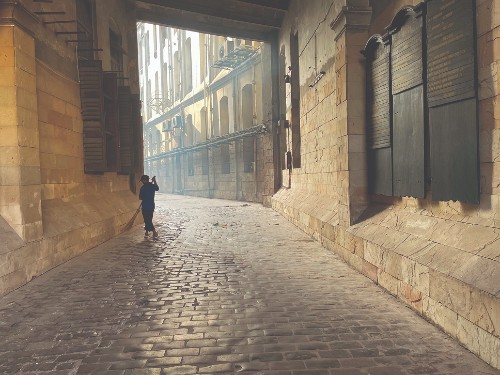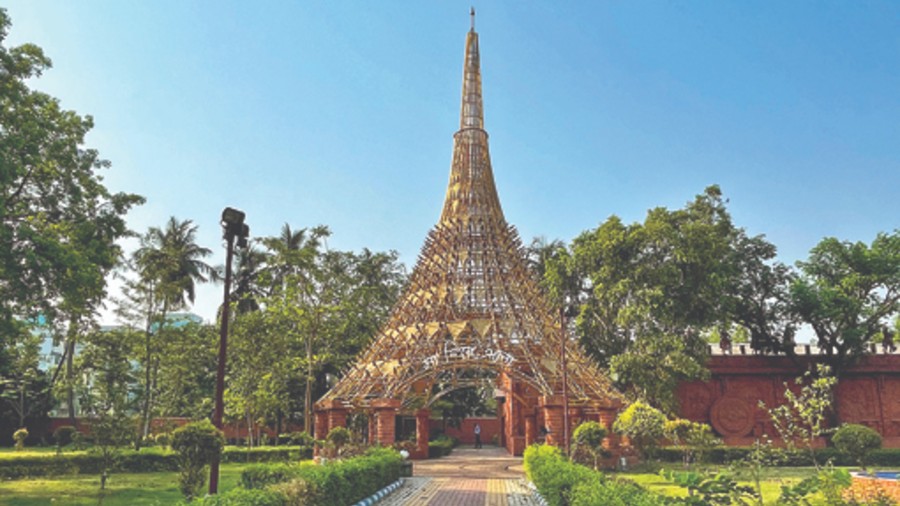Buzz of the tech world: Buy our phone because it has a 108MP camera. There are many sides to the marketing one-liner. When the cake is about to be cut at a birthday party, there are always those four-five voices shouting “Who has an iPhone”, a device whose latest iteration comes with 12MP cameras. Then there is Google Pixel, which too is against the tide. It’s universally accepted that the iPhone and Pixel continue to be the best devices to take a picture on (for videos, the former is the best). Yet, Android phone manufacturers harp on 48MP, 64MP and, now, 108MP. Bigger the better, right? And it’s way cheaper.
Frankly, 108MP is a wild number, which I was infatuated with when Xiaomi Mi Note 10 arrived in 2019. The months that followed made things clearer. We are in 2021 with at least three 108MP camera set-ups vying for attention.
First, more megapixels don’t mean better pictures. There has to be something more. The megapixel push has happened before — 4MP, 8MP, 12MP… remember Nokia Lumia 1020 with a 41MP lens? Just like then, the camera set-up with the highest megapixel drive is crowned the “king”.
Consider a megapixel. It’s one million tiny coloured dots in a photo. Logically, an increase in megapixels should mean sharper photos. Reality: It basically means comme ci, comme ca photos made with more dots. More than megapixels, it’s colour accuracy, exposure, dynamic range, contrast and other elements that are far more important factors. Not that extra megapixels are not handy but there’s more to it.

Pictures taken on 12MP phone cameras have lower noise and less smoothening out of details Pictures: The Telegraph
The devil’s advocate
An important question you need to ask yourself is what do you want to do with the pictures taken on a mobile phone? Having extra megapixels to play around with can be helpful when it comes to cropping. You can crop out unwanted background, yet be left with sufficient amount of pixels for a decent print. That last word is important. You want to crop a picture to make a print. In this case, it helps to have more megapixels.
The most important ingredient in the optical department is the sensor, for that captures the light. Light enters through the lens, goes through the sensor, gets translated into an electronic signal, which the image processor works on and creates an image while trying to reduce flaws like noise. To keep it simple, the larger the size of the sensor, the larger the pixels, and more light can go through. More light means better the quality of the image.
Revisiting an analogy that Cnet had used years ago, consider buckets to be like pixels. These buckets are placed on a blacktop or the sensor. You want to collect water (or light) in these buckets. If the buckets are small, it will hold less water. If the sensor is larger, larger the pixels or buckets.
On a camera with 108MP, the pixels are small and the sensor size is not huge. So, pixels are combined — can be nine into one or, say, four into one — to make images appear crisp in broad daylight.

The photos have been taken using 12MP phone cameras and these can be easily blown up for printing Pictures: The Telegraph
But there’s (a lot) more
You can argue as to why can’t one take a full 108MP shot. You can. But such shots take time to save — a few seconds — and a lot of space. If an average 12MP shot takes, say, 6MB, an image taken at 108MP resolution may take up 20-25MP. That’s huge.
Photos taken at 108MP also appear to be sharper in the centre but as you move outwards, sharpness gets lost. In fact, if you look at the corner of the frames, it’s not sharp and, many times, out of focus. If you are fine with taking pictures where sharpness needs to be in the centre of the frame and nothing else matters, then fine. But the idea doesn’t stick when you need to take a landscape shot, where everything matters.
Things get worse in low light. A photo taken using an iPhone or Pixel — neither have gone the 108MP way — there is significantly less noise and significantly more details. It doesn’t need to smoothen out noise as much as any 108MP camera.
One of the biggest myth is 108MP photos look good when you share it with your friends. What you are not told is how you are going to share the photos. Via social media, right? When you upload an image on Facebook, Instagram or Twitter, it gets compressed. And pictures don’t look as fantastic as they do on your phone.
Also, if everyone views your social media photos on ultra HD displays, which they are not, higher megapixels can be an overkill. 4K video recording can do with an 8.5MP snapper, enough to make things look pixel perfect. What you have is 12MP, which offers enough wriggle room for cropping and recomposing later. TL;DR: 12MP is optimal.
What you need to look at is how well the software works with the camera, how much dynamic range is on offer, what kind of software processing is being done. Not just iPhones, look at Google’s Pixel devices. While all Android phone brands have gone over the top with the number of shooters on the back — to the point it appears that there is no rear panel but just camera — Pixel 5 has kept it two shooters, one being 12.2MP dual-pixel while the other is a 16MP ultra-wide. With the Pixel 5 or the Pixel 4a you can get far clearer pictures than on most other Android phones. Software is important.
Where megapixels truly help is when cropping is required. Otherwise, for a 16-by-24-inch print, you can very well stick to an iPhone or Pixel.
Unfortunately, the megapixel myth works its charm when you walk into a store — in case you still do that — and you are torn between two phones. Somehow, megapixels are shaping buying decisions. But would you fall for a WhatsApp message, which encourages you to share something with 50 friends to get 50 per cent discount on a pair of shoes while 100 shares may get 75 per cent discount? Same applies here. More megapixels don’t really help to capture all the details.
For a better understanding
Telephoto or periscope camera: It helps to get a phone which lets you optically (versus digital) zoom in on something slightly far away.
Macro camera: It can be useful if it comes with some sort of stablisation. Most budget and mid-range phones don’t offer any kind of stablisation with the macro sensor, which is difficult to use since you need to hold the camera a few centimeters away from the subject.
Monochrome sensor: You won’t experience much of a difference between using the monochrome sensor on a phone versus applying a filter.
Number of cameras: Two (main and ultra-wide) are enough and maybe a telephoto.
Camera branding: It always helps to go with a smartphone brand that works on its camera hardware as well as software, allowing better integration.
OIS: Optical image stablisation is important if you are looking for steady shots and videos.










